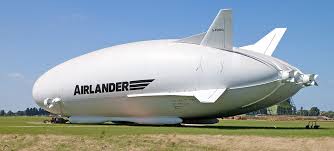
Breaking News
 Firegate: Democrat LA Mayor Karen Bass' Admin Altered Palisades Fire Report & Deleted Evidence
Firegate: Democrat LA Mayor Karen Bass' Admin Altered Palisades Fire Report & Deleted Evidence
 BREAKING: Candace Owens' Massive Mind Control House of Cards is Now Collapsing in Real Time
BREAKING: Candace Owens' Massive Mind Control House of Cards is Now Collapsing in Real Time
 We Cannot Build an Economy on Lies
We Cannot Build an Economy on Lies
 We Went To Nebraska: The Beef Crisis Will Shock You
We Went To Nebraska: The Beef Crisis Will Shock You
Top Tech News
 EngineAI T800: Born to Disrupt! #EngineAI #robotics #newtechnology #newproduct
EngineAI T800: Born to Disrupt! #EngineAI #robotics #newtechnology #newproduct
 This Silicon Anode Breakthrough Could Mark A Turning Point For EV Batteries [Update]
This Silicon Anode Breakthrough Could Mark A Turning Point For EV Batteries [Update]
 Travel gadget promises to dry and iron your clothes – totally hands-free
Travel gadget promises to dry and iron your clothes – totally hands-free
 Perfect Aircrete, Kitchen Ingredients.
Perfect Aircrete, Kitchen Ingredients.
 Futuristic pixel-raising display lets you feel what's onscreen
Futuristic pixel-raising display lets you feel what's onscreen
 Cutting-Edge Facility Generates Pure Water and Hydrogen Fuel from Seawater for Mere Pennies
Cutting-Edge Facility Generates Pure Water and Hydrogen Fuel from Seawater for Mere Pennies
 This tiny dev board is packed with features for ambitious makers
This tiny dev board is packed with features for ambitious makers
 Scientists Discover Gel to Regrow Tooth Enamel
Scientists Discover Gel to Regrow Tooth Enamel
 Vitamin C and Dandelion Root Killing Cancer Cells -- as Former CDC Director Calls for COVID-19...
Vitamin C and Dandelion Root Killing Cancer Cells -- as Former CDC Director Calls for COVID-19...
 Galactic Brain: US firm plans space-based data centers, power grid to challenge China
Galactic Brain: US firm plans space-based data centers, power grid to challenge China
Production model of Airlander 10 will be sleeker and more efficient

As compared to the current functioning prototype, the new model will have a sleeker, more aerodynamic hull. This design update is based on both wind tunnel testing and computer modelling, along with data gathered during test flights of the prototype. Its changed shape is particularly visible in the form of a rounder nose, and a new tail section.
The cabin will also be more aerodynamic, plus it will be longer. The latter is made possible due to the fact that components such as the fuel module, which are currently slung below the prototype's hull, are being moved up into the hull. As a result, the cabin can now be up to 46 meters long by 6 m wide (151 by 20 ft). In that configuration, it offers 2,100 sq ft (195 sq m) of floor space, not including the flight deck.
Hybrid Air Vehicles, the UK company that is adapting the original technology for civilian use, previously released images of what a deluxe tourist-carrying version of that cabin might look like.



